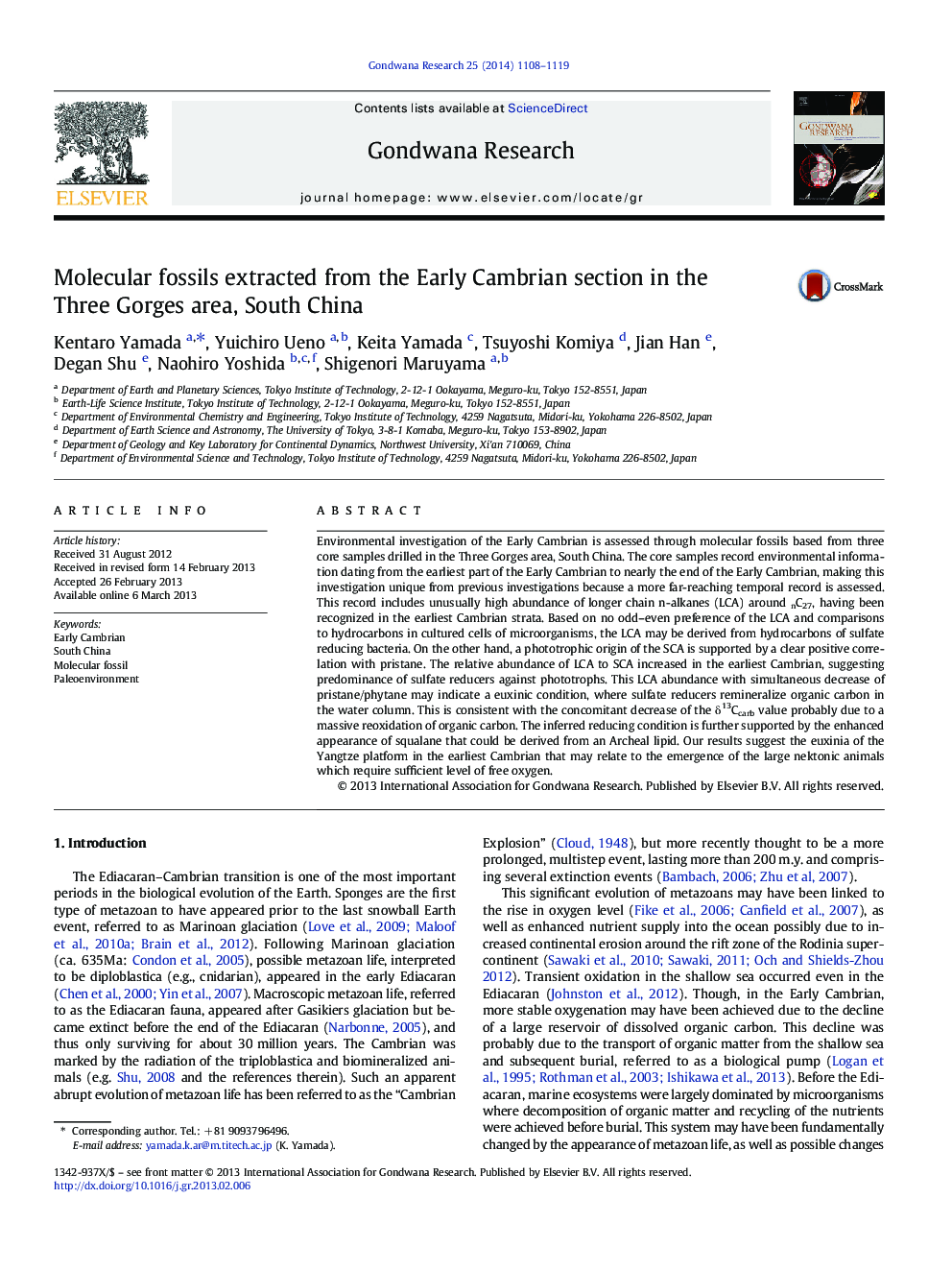| کد مقاله | کد نشریه | سال انتشار | مقاله انگلیسی | نسخه تمام متن |
|---|---|---|---|---|
| 4726978 | 1356355 | 2014 | 12 صفحه PDF | دانلود رایگان |

• Hydrocarbons are reported from the Early Cambrian section in South China.
• Long chain n-alkanes from sulfate reducers increased in the earliest Cambrian.
• Sulfate reducers contribute in the reduction of the organic carbon pool.
Environmental investigation of the Early Cambrian is assessed through molecular fossils based from three core samples drilled in the Three Gorges area, South China. The core samples record environmental information dating from the earliest part of the Early Cambrian to nearly the end of the Early Cambrian, making this investigation unique from previous investigations because a more far-reaching temporal record is assessed. This record includes unusually high abundance of longer chain n-alkanes (LCA) around nC27, having been recognized in the earliest Cambrian strata. Based on no odd–even preference of the LCA and comparisons to hydrocarbons in cultured cells of microorganisms, the LCA may be derived from hydrocarbons of sulfate reducing bacteria. On the other hand, a phototrophic origin of the SCA is supported by a clear positive correlation with pristane. The relative abundance of LCA to SCA increased in the earliest Cambrian, suggesting predominance of sulfate reducers against phototrophs. This LCA abundance with simultaneous decrease of pristane/phytane may indicate a euxinic condition, where sulfate reducers remineralize organic carbon in the water column. This is consistent with the concomitant decrease of the δ13Ccarb value probably due to a massive reoxidation of organic carbon. The inferred reducing condition is further supported by the enhanced appearance of squalane that could be derived from an Archeal lipid. Our results suggest the euxinia of the Yangtze platform in the earliest Cambrian that may relate to the emergence of the large nektonic animals which require sufficient level of free oxygen.
Figure optionsDownload as PowerPoint slide
Journal: Gondwana Research - Volume 25, Issue 3, April 2014, Pages 1108–1119